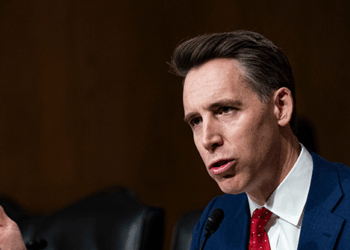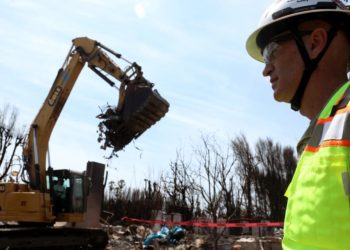Years before the Oklahoma Supreme Court dismissed a long-fought lawsuit seeking reparations to compensate the last two centenarian survivors of the Tulsa Race Massacre, the lead lawyer and a team were already working on a larger plan to repair century-old harms.
On Tuesday, Damario Solomon-Simmons unveiled Project Greenwood, a sweeping plan to restore the city’s Greenwood district — which was destroyed in 1921 by a mob of white Tulsans — and to compensate massacre survivors and descendants.
The project provides survivors and the descendants “a tangible benefit to move forward — it’s something we have needed for 104 years,” said Mr. Solomon-Simmons, who filed the dismissed case seeking reparations in 2020. “But it’s also great for the city of Tulsa, because this will promote true healing and conciliation. It will remove the dark cloud that sits on top of Tulsa now because of the massacre.”
The plan calls for several forms of financial redress, but the priority is reparations for Lessie Benningfield Randle and Viola Ford Fletcher, the 110-year-old survivors who were young children at the time.
“They both want to see justice before they die,” LaDonna Penny, a granddaughter of Ms. Randle, said through tears. She added, “If this is the opportunity to give them their flowers while they’re still here, then the city needs to do it.”
Mayor Monroe Nichols said the plan reflected the “unshakable resolve” of survivors and descendants to address the effects of the neighborhood’s destruction across generations.
“I look forward to implementing significant elements of the plan in partnership with Justice for Greenwood and other stakeholders,” Mr. Nichols, the first Black mayor of Tulsa, said in a statement. “In the coming weeks, I will share the framework my administration will use to heal the open wounds left by the massacre and create a stronger, more unified Tulsa for all.”
Though the project is in the early stages, Mr. Solomon-Simmons said he was exploring private-public partnerships to help to finance the project.
Greenwood was home to successful restaurants, hotels, restaurants, theaters and grocery stores, inspiring the name Black Wall Street. On May 31 and June 1, 1921, a white mob burned the neighborhood to the ground. As many as 300 people were killed; 35 blocks were razed and more than 1,250 homes destroyed.
The scale and toll underscore the massacre’s place as one of the worst episodes of racial violence in American history. In the decades since, the survivors, their descendants and supporters have demanded justice from the city and other entities.
Last year, former Mayor G.T. Bynum announced the creation of the Beyond Apology Commission to explore ways to address the harms caused by the attack. But he has not supported cash reparations, saying he does not believe today’s Tulsans should be responsible for what occurred in the past. Separately, the city has excavated the sites of suspected mass graves of massacre victims. C.L. Daniel, an U.S. Army veteran from Georgia, was the first victim identified as part of the city’s search.
Just weeks before Project Greenwood was unveiled, the Justice Department released its first comprehensive report on the massacre, describing the assault as “a coordinated, military-style attack” but concluding that no person alive could be prosecuted.
The harm-based plan also proposes creating a victim compensation fund and bringing a trauma hospital and urgent care center to the north Tulsa neighborhood as a way to address longstanding health disparities. The hospital would be named after Dr. A.C. Jackson, a Black surgeon killed during the massacre.
It also calls on the city to conduct an audit of the land it owns in Greenwood to determine whether it was unlawfully seized during or after the massacre. Such properties should be returned to the families of the original owners, or the city should pay them fair market value, according to the plan. And it suggests that June 1 be declared a city holiday, “to ensure that the massacre is never forgotten.”
The post Proposal Calls for Restoring Tulsa Massacre Neighborhood appeared first on New York Times.




